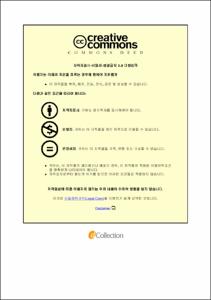Protective effect of sweet and unshiu mikan oranges and mini tomato on t-BHP-induced oxidative stress in HepG2 cells
- Abstract
- The fruits of orange species and mini tomato originated from south East Asia, but are consumed all over the world as healthy foods, and contain bioactive key components. Epidemiological studies indicate that an increase in the consumption of fruits and vegetables associated with a decrease in the incidence of cardiovascular, chronic and degenerative, inflammatory, liver diseases. The aim of this study was to investigate the protective effect of juice powders from sweet orange (Citrus sinensis), unshui mikan orange (Citrus unshiu), mini tomato (Solanum lycopersicum) juice powders and their combinations as well as their major flavonoids such as hesperidin, narirutin and rutin on tert-butyl hydroperoxide (t-BHP)-induced oxidative stress on HepG2 cells. The cell viability of juice powders and their combinations as well as their flavonoids were measured by MTT assay. Hepatoprotective effect of juice powders against oxidative stress induced by t-BHP on HepG2 cells were investigated through the measurement of cytoprotective effect, intracellular ROS, GSH and the up-regulation of phase-ІІ protein such as heme oxygenase-1 (HO-1) expression through western blot analysis. HPLC was used to analyze the major flavonoids of juice powders. In the current study, juice powders and their combinations were evaluated for total phenolic and vitamin C content determination. According to HPLC analysis, hesperidin and narirutin are dominantly present in two orange species and rutin in tomato species. The increased ROS and decreased glutathione levels observed in t-BHP-treated HepG2 cells were ameliorated by juice powders pretreatment, indicating that the hepatoprotective effects of juice powders, their combinations and the major flavonoids are mediated by the induction of cellular defense action against oxidative stress. The protective effects of juice powders, their combinations and the major flavonoids significantly inhibited the cytotoxic effect induced by 200 µM t-BHP on HepG2 cells and also may be associated with positive regulation of GSH levels and decrease in ROS production, thereby preventing cellular damage and the resultant increase in HO-1 expression. These results suggest that the fruit juice powders and their combinations as well as their major flavonoids displayed a significant cytoprotective effect against oxidative stress which may be most likely because of the flavonoids-related bioactive compounds existing therein leading to the normal redox status of cells. Therefore these fruit juice powders and their specific combinations could be advantageous as a bioactive source for the prevention of oxidative injury in hepatoma cells.
- Issued Date
- 2016
- Awarded Date
- 2016. 2
- Type
- Dissertation
- Publisher
- 부경대학교 대학원
- Affiliation
- 부경대학교 대학원 식품생명과학과
- Department
- 대학원 식품생명과학과
- Advisor
- 최재수
- Table Of Contents
- I. Introduction 1
II. Materials and Methods 9
2-1. Chemicals 9
2-2. Preparation of juice sample 9
2-3. HPLC Analysis 10
2-4. Determination of total phenolic content 11
2-5. Determination of total flavonoid content 11
2-6. Vitamin C content determination by DCPIP solution 12
2-7. Cell culture 13
2-8. Cell viability and cytoprotective assay in HepG2 cells 13
2-9. Measurement of the level of intracellular reactive oxygen species 14
2-10. Quantification of glutathione 15
2-11. Western blotting analysis and HO activity 15
2-12. Statistical analysis 16
III. Results 17
3-1. HPLC profile of major flavonoids derived from citrus species and
tomato juice powders 17
3-2. Determination of TPC, TFC and vitamin C contents of the citrus species and tomato juice powder 20
3-3. Cytotoxicity of unshiu mikan, sweet orange, raw tomato, boiled tomato and their combination 2:1:3 (sweet orange: tomato: unshiu mikan) juice powder as well as their major flavonoid compounds 24
3-4. Cytoprotective effect of unshiu mikan, sweet orange, boiled tomato, and 2:1:3 and their key flavonoids on tert-butyl hydroperoxide induced hepatotoxicity in HepG2 cell 29
3-5. Effect of unshiu mikan, sweet orange, boiled tomato and 2:1:3 (sweet orange: tomato: unshiu mikan) on t-BHP-induced ROS generation in the HepG2 cell 35
3-6. Effect of hesperidin, rutin and narirutin on t-BHP-induced ROS generation in the HepG2 cell 39
3-7. Effect of unshiu mikan, sweet orange, boiled tomato and 2:1:3 on intracellular GSH level in t-BHP-treated HepG2 cells 42
3-8. Effect of major flavonoids compounds on intracellular GSH levels in t-BHP treated HepG2 cells 46
3-9. Citrus species and tomato juice powders as well as their key flavonoids induces HO-1 expression in a dose-dependent manner 50
IV. Discussion 53
V. Conclusion 62
VI. References 64
- Degree
- Master
- Files in This Item:
-
-
Download
 Protective effect of sweet and unshiu mikan oranges and mini tomato on t-BHP-induced oxidative stres.pdf
기타 데이터 / 929.7 kB / Adobe PDF
Protective effect of sweet and unshiu mikan oranges and mini tomato on t-BHP-induced oxidative stres.pdf
기타 데이터 / 929.7 kB / Adobe PDF
-
Items in Repository are protected by copyright, with all rights reserved, unless otherwise indicated.